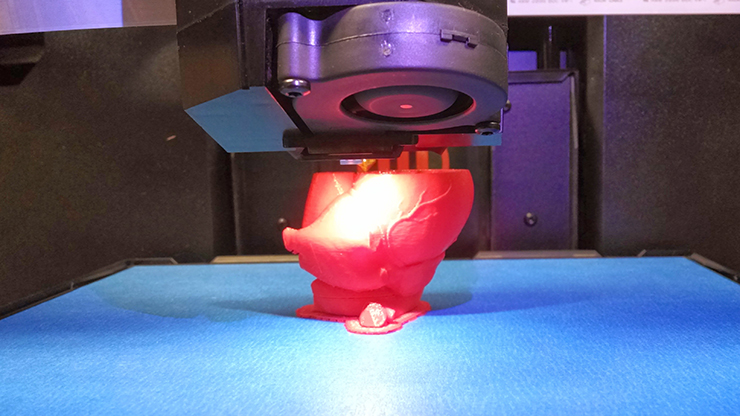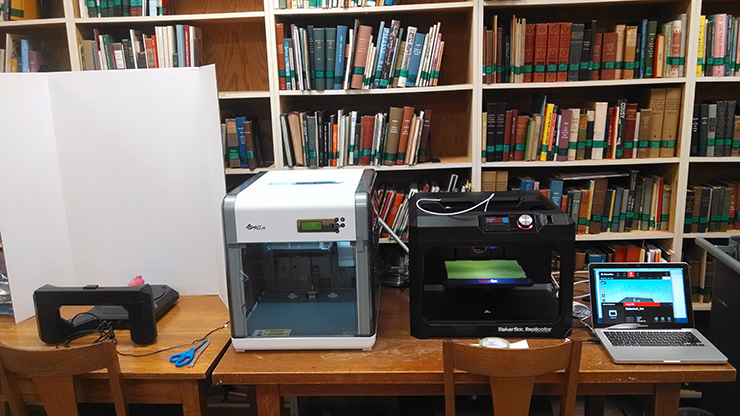Caldwell University
May 21, 2020
What is 3D Printing?
By Heather Cook and Anthony Yang
3D printing has arrived at Caldwell University! We now have two 3D printers and two 3D scanners in the Caldwell University Creation Station (CCCS).
What is 3D printing?
- 3D printing is an additive manufacturing process where an object is created, layer-by-layer, from a 3D design or model.
- The printers in the CCCS melt polylactic acid (PLA) biodegradable plastic or acrylonitrile butadiene styrene (ABS) and layers the plastic 100-300 microns at a time.
- Many of the items can be printed in one shot. Because the item is “sliced” by the software into individual layers, most of the moving parts of the final object can be printed in place (e.g. adjustable wrenches, intricate hinges, chain links, etc).
What can I make with a 3D printer?
The primary use for 3D printers today is to create prototypes instead of production en masse. The motto is, “fail early and fail often.” In the past, prototyping took a long time. You had to come up with an idea. Then you would send it to be produced. Once you got your prototype delivered, you would immediately notice that there were a few things wrong and you had to redesign it and send it back to be produced again. There would be a back-and-forth and it would extend prototype cycles to months, even years.
With 3D printing you can come up with an idea, print it out in a few hours, find out what is wrong with it and reproduce it the same day. You can make and modify multiple prototypes in a single day! This cuts the prototyping phase of a project to a fraction of what it was before. Months and years turn in to days and weeks. This rapid prototyping is changing the design and manufacturing industry. Some companies are even using 3D printers to print production items.
Here are just a few applications of 3D printing:
- Medical models – Surgeons can print out models of a patients organs, based on medical imaging, in place to help visualize the best course for the upcoming operation.
- Prosthetic limbs – Prosthetics that once would have to be customized to the individual could cost thousands of dollars. This presented a real problem for kids because they could grow out of them in less than a year. There are prosthetics that can be printed and scaled for just a few dollars, drastically reducing the cost to the patient and the family.
- custom parts – If a plastic part breaks on an item that you own, you can print out another one.
- Clothing – There are different types of plastics that can be used to print out clothing and fashion items.
- Jewelry
- Toys
How can I print something?
More details are coming soon on this. We will be making 3D printing available to students, faculty, staff and the community. You can use one of our scanners or bring a 3D file in and have it printed. Stay tuned for more information.
Heather Cook is the learning commons librarian at Caldwell University and led the team for the grant to fund the purchase of the 3D printer. Anthony Yang is the web developer at Caldwell University.
Here is the 3D printer in action, printing a model of the human heart:









